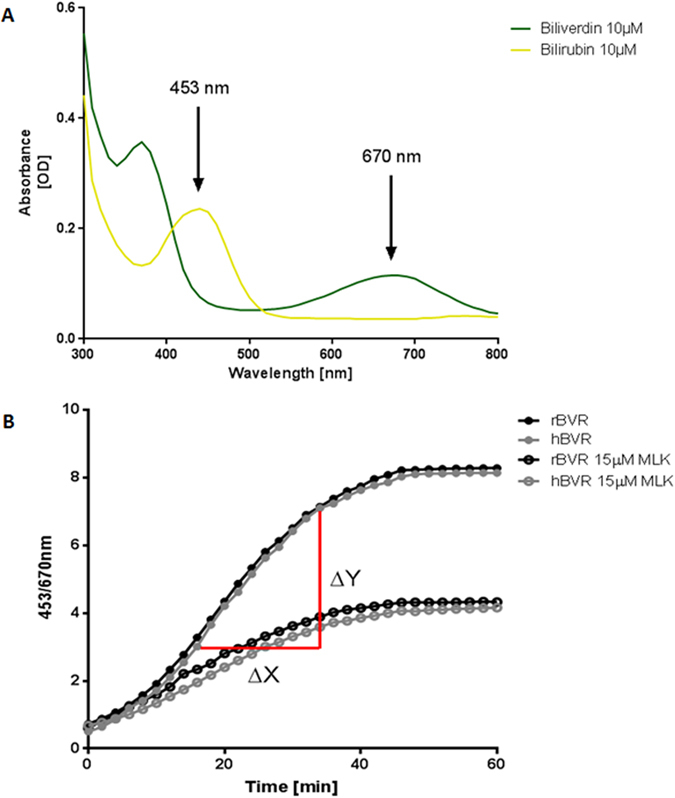Figure 2.

(A) The biliverdin reductase activity assay makes use of the different wavelengths at which bilirubin (453 nm) and biliverdin (670 nm) have their peak absorbance [OD]. The absorbance spectrum was measured at a concentration of 10 μmol/L in a total volume of 200 μL at 37 °C by a Synergy HT multi-detection reader. (B) Biliverdin reductase activity is derived from the speed at which biliverdin is converted to bilirubin by calculating the slope over the linear part of the enzymatic reaction. Cytosolic rat or human biliverdin reductase (rBVRA or hBVRA) was pre-incubated at 37 °C with 10 μmol/L biliverdin, bovine serum albumin (BSA 400 μg/ml) and 50 mM TrisHCL pH8.7. The reaction was started by adding NADPH to a final concentration of 100 μmol/L in a total volume of 200 μL. The conversion of biliverdin to bilirubin was determined by measuring absorbance every 2 minutes for 60 minutes and expressed as the ratio 453/670 nm. When 15 μM Montelukast (MLK) is added to the reaction, the reduced slope (∆Y/∆X) indicates reduced BVRA activity.
